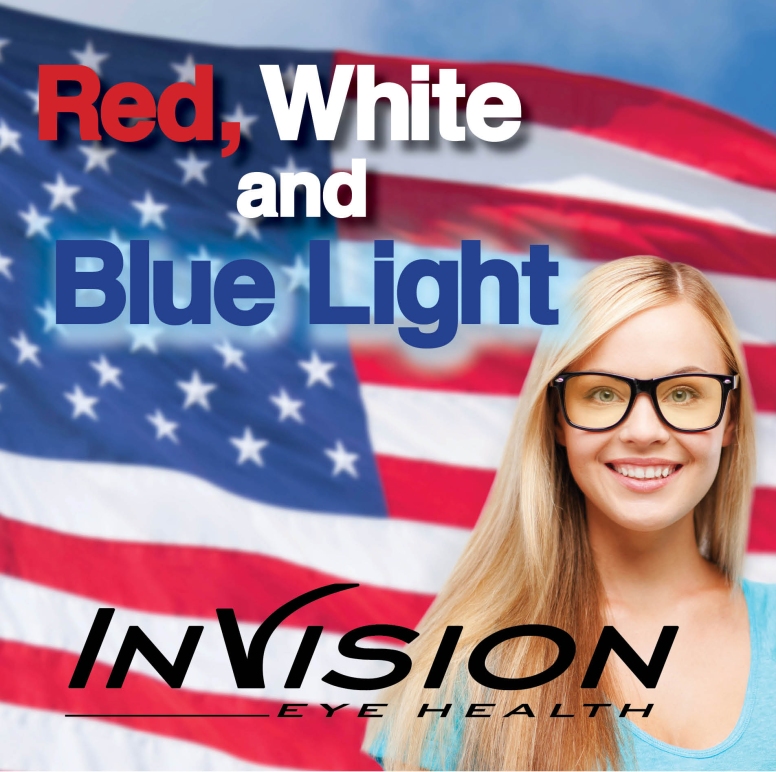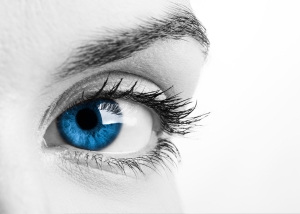Diabetes is a disease that interferes with the way the body uses and stores sugar. Too much sugar in the bloodstream can cause damage throughout the body, including the eyes. Every part of the eye can be affected, but the most significant and sight-threatening complication occurs from damage to the retina, known as diabetic retinopathy.
The retina is the inside lining of the eye and it requires a steady blood supply to function well. If blood sugar is too high, it causes damage to the blood vessels supplying oxygen to the retina. This damage leads to leakage of blood, called hemorrhages, into the surrounding tissue. This is called non-proliferative diabetic retinopathy. Depending on the severity, non-proliferative diabetic retinopathy is closely monitored anywhere from every couple months to just once per year.

If blood continues to leak from the blood vessels, there is less blood going downstream to the parts of the retina that need it. The body tries to compensate by making new blood vessels. Sounds great, but these new vessels are not as strong and healthy as the originals and are prone to leaking even more. When this happens it’s called retinal neovascularization or proliferative diabetic retinopathy. This is a serious complication that can lead to scarring, retinal detachments, and even blindness. Proliferative diabetic retinopathy requires urgent retinal surgery and/or eye injections to stop these new blood vessels from growing and minimize the risk of blindness.
 Other possible complications include:
Other possible complications include:
- Fluctuating vision – If blood sugar levels are high, the crystalline lens inside the eye swells and changes how the eye focuses. When blood sugar levels go down, the swelling will too, and cause yet another change in the focus and glasses prescription.
- Dry eyes – Increased blood sugar in the body changes the composition of the tear film and leads to dryness.
- Slower healing – If there is an eye infection it often takes longer to heal.
- Cataracts – This complication develops when the crystalline lens becomes cloudy and does not allow light through to the retina, causing cloudy, blurred vision.
- Glaucoma – There is an increased risk of glaucoma in patients with diabetes.
- Macular degeneration – There is an increased risk of macular degeneration in patients with diabetes. (2)
The best way to prevent eye complications from diabetes is to closely manage blood sugar levels and have annual diabetic eye examinations to monitor for early changes inside the eyes.
(1) Diabetic Retinopathy. (n.d.). Retrieved November 18, 2015, from http://www.aoa.org/patients-and-public/eye-and-vision-problems/glossary-of-eye-and-vision-conditions/diabetic-retinopathy?sso=y&ct=9c51c9ebdd57c60365283b2ca0ae5c5a808f613337ba332f4c51eb5ad4cd91975a4496841f467931ade84cbccec12f1356a71dd098703ed3ebedffffb75e
(2) Quick Reference Guide: Evidence-Based Clinical Practice Guidelines, First Edition, 2014. American Optometric Association
Dr. Capstick graduated with honors from Pacific University College of Optometry in Forest Grove, Oregon, with a Bachelor of Science in Vision Science and a Doctor of Optometry. She completed her internship training at the Salt Lake City VA Medical Center in Salt Lake City, UT; Pediatric Strabismus Referal Center, Pacific Universtiy College of Optometry in Portland, OR; Lasik co-management at Spivack Vision Center in Denver, CO; and primary care at Alaska EyeCare Centers in Anchorage, AK. She completed a residency in Cornea/ Contact Lens and Ocular Disease at UC Berkeley School of Optometry in Berkeley, CA.






 indoor wear to filter out both UV and blue light—you can get them without an Rx or we can make them in your prescription, even a progressive lens! For computer users fifty and over, Dr. White recommends the Blutech office lens. He absolutely loves his!
indoor wear to filter out both UV and blue light—you can get them without an Rx or we can make them in your prescription, even a progressive lens! For computer users fifty and over, Dr. White recommends the Blutech office lens. He absolutely loves his! July is all about Red, White and Blue Light! Blue light contributes to dry eye, eye fatigue, macular degeneration, sleep disorders and migraines– InVision will be focussing on how blue light affects your life and how to combat those effects this month.
July is all about Red, White and Blue Light! Blue light contributes to dry eye, eye fatigue, macular degeneration, sleep disorders and migraines– InVision will be focussing on how blue light affects your life and how to combat those effects this month.

 There are certain areas of our lives where we all feel like we know what we’re doing. We are competent, capable, and confident in our ability to order a pizza, drive a car, or send an email. You may have thought that blinking would be on that list of things you know how to do, and do well.
There are certain areas of our lives where we all feel like we know what we’re doing. We are competent, capable, and confident in our ability to order a pizza, drive a car, or send an email. You may have thought that blinking would be on that list of things you know how to do, and do well.

 Great work! You found the shiny new blog of InVision Eye Health! We hope you’ll stick around– and we’ll make it worth your time with cutting-edge insights into the ever expanding universe of eye health care and technology. We have the best Optometrists in Utah–with extensive education, unique specialties and charming personalities to guide you through this exciting area of your overall health and well-being.
Great work! You found the shiny new blog of InVision Eye Health! We hope you’ll stick around– and we’ll make it worth your time with cutting-edge insights into the ever expanding universe of eye health care and technology. We have the best Optometrists in Utah–with extensive education, unique specialties and charming personalities to guide you through this exciting area of your overall health and well-being.